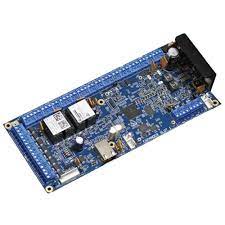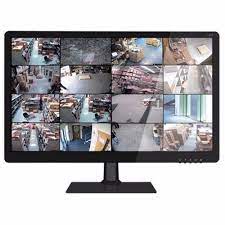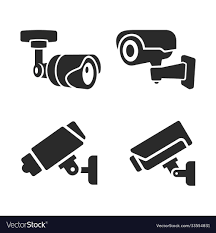In today’s digital age, where data security is of paramount importance, controlling network access has become a critical aspect for organizations. A controller network access system allows businesses to regulate and manage the flow of information within their networks, ensuring that only authorized individuals can access sensitive data and resources.
Controller network access refers to the use of centralized software or hardware devices to authenticate and authorize users attempting to connect to a network. This system provides administrators with granular control over who can access specific resources, such as files, applications, or databases.
One of the key benefits of implementing a controller network access system is enhanced security. By enforcing strict authentication protocols, such as two-factor authentication or biometric verification, organizations can significantly reduce the risk of unauthorized access to their networks. This helps protect sensitive information from falling into the wrong hands and minimizes the potential for data breaches.
Moreover, controller network access systems enable organizations to implement role-based access control (RBAC). RBAC allows administrators to assign specific permissions and privileges based on an individual’s role within the organization. For example, an employee in the finance department may have access to financial data and accounting software, while someone from the marketing team may only have access to marketing materials and analytics tools. RBAC ensures that users only have access to resources necessary for their job function, reducing the risk of accidental or intentional misuse of data.
Another advantage of controller network access is improved visibility and monitoring capabilities. These systems provide administrators with real-time insights into user activities within the network. They can track login attempts, monitor resource usage, and identify any suspicious behavior or unauthorized access attempts. By having this level of visibility, organizations can proactively detect and mitigate potential security threats before they escalate into major incidents.
Additionally, controller network access systems offer scalability and flexibility. As businesses grow and evolve, these systems can easily adapt to accommodate new users, devices, and network resources. Administrators can quickly add or remove user accounts, modify access permissions, and integrate new authentication methods as needed. This scalability ensures that the network access control system remains effective even in dynamic and rapidly changing environments.
In conclusion, implementing a controller network access system is crucial for organizations looking to safeguard their data and protect their networks from unauthorized access. By leveraging centralized authentication and authorization mechanisms, businesses can enhance security, enforce role-based access controls, monitor user activities, and adapt to evolving requirements. Investing in a robust controller network access solution is an essential step towards maintaining data integrity and mitigating potential cybersecurity risks.
Seven Essential Tips for Securing Your Controller Network Access
- 1. Use strong and unique passwords for your network devices.
- 2. Regularly update the firmware of your network controllers to ensure security patches are applied.
- 3. Implement secure remote access methods, such as VPNs, for accessing your network controllers remotely.
- 4. Enable two-factor authentication to add an extra layer of security to your controller access.
- 5. Disable unnecessary services and ports on your network controllers to minimize potential attack vectors.
- 6. Regularly monitor and log access attempts to identify any unauthorized access attempts or suspicious activity.
- 7. Educate yourself and your team about common network security threats and best practices for securing controller access.
1. Use strong and unique passwords for your network devices.
To ensure the security of your network devices, it is essential to use strong and unique passwords. Weak passwords can be easily guessed or cracked, providing unauthorized individuals with access to your network. By using a combination of uppercase and lowercase letters, numbers, and special characters, you can create a strong password that is difficult to guess. Additionally, it is crucial to use unique passwords for each network device. This practice prevents a single compromised password from granting unauthorized access to multiple devices, enhancing the overall security of your network. Remembering and managing multiple passwords can be challenging, but the added protection it provides is well worth the effort.
2. Regularly update the firmware of your network controllers to ensure security patches are applied.
Regularly updating the firmware of your network controllers is a crucial step in ensuring the security of your network access system. Firmware updates often include important security patches that address vulnerabilities and protect against potential threats. By staying up to date with these updates, you can ensure that your network controllers have the latest security measures in place, minimizing the risk of unauthorized access or data breaches. Make it a priority to regularly check for firmware updates from your controller manufacturer and promptly apply them to maintain a secure and resilient network infrastructure.
3. Implement secure remote access methods, such as VPNs, for accessing your network controllers remotely.
To ensure secure remote access to network controllers, it is highly recommended to implement secure remote access methods, such as Virtual Private Networks (VPNs). VPNs create an encrypted tunnel between the remote user and the network controller, providing a secure pathway for data transmission. By using VPNs, organizations can establish a protected connection for authorized individuals to remotely access and manage network controllers without compromising the security of sensitive information. This additional layer of encryption helps safeguard against potential threats and unauthorized access attempts, ensuring that remote access to network controllers remains secure and protected.
4. Enable two-factor authentication to add an extra layer of security to your controller access.
Enabling two-factor authentication is a highly recommended tip to enhance the security of your controller network access. Two-factor authentication adds an extra layer of protection by requiring users to provide two forms of verification before gaining access to the network. Typically, this involves entering a password as the first factor and then providing a second factor, such as a unique code sent to a mobile device or generated by an authentication app. By implementing two-factor authentication, organizations can significantly reduce the risk of unauthorized access even if passwords are compromised. This additional layer of security helps ensure that only authorized individuals with both the correct credentials and physical access to the second factor can gain entry to critical network resources, bolstering overall data protection measures.
5. Disable unnecessary services and ports on your network controllers to minimize potential attack vectors.
To enhance the security of your network controllers, it is advisable to disable unnecessary services and ports. By doing so, you minimize potential attack vectors that could be exploited by malicious actors. When services and ports are disabled, it reduces the number of entry points that attackers can target, making your network controllers less vulnerable to unauthorized access or breaches. By carefully evaluating and disabling any services or ports that are not essential for the operation of your network controllers, you can significantly reduce the risk of potential security threats and ensure a more secure network environment.
6. Regularly monitor and log access attempts to identify any unauthorized access attempts or suspicious activity.
Regularly monitoring and logging access attempts is a crucial tip for maintaining the security of a controller network access system. By keeping a close eye on login attempts and recording them in detailed logs, organizations can quickly identify any unauthorized access attempts or suspicious activity within their networks. This proactive approach allows administrators to take immediate action, such as blocking suspicious IP addresses or investigating potential security breaches. Regular monitoring and logging not only help in detecting and preventing unauthorized access but also provide valuable insights for strengthening the overall network security posture.
7. Educate yourself and your team about common network security threats and best practices for securing controller access.
To ensure the effectiveness of controller network access, it is essential to educate yourself and your team about common network security threats and best practices for securing controller access. By staying informed about the latest security vulnerabilities and attack techniques, you can proactively implement preventive measures to safeguard your network. Educating your team on best practices, such as using strong passwords, enabling two-factor authentication, and regularly updating software and firmware, will help create a culture of security awareness within your organization. Additionally, conducting regular training sessions and sharing relevant resources will empower your team to make informed decisions and take necessary precautions when it comes to network security. By prioritizing education and knowledge-sharing, you can significantly enhance the overall security posture of your controller network access system.



